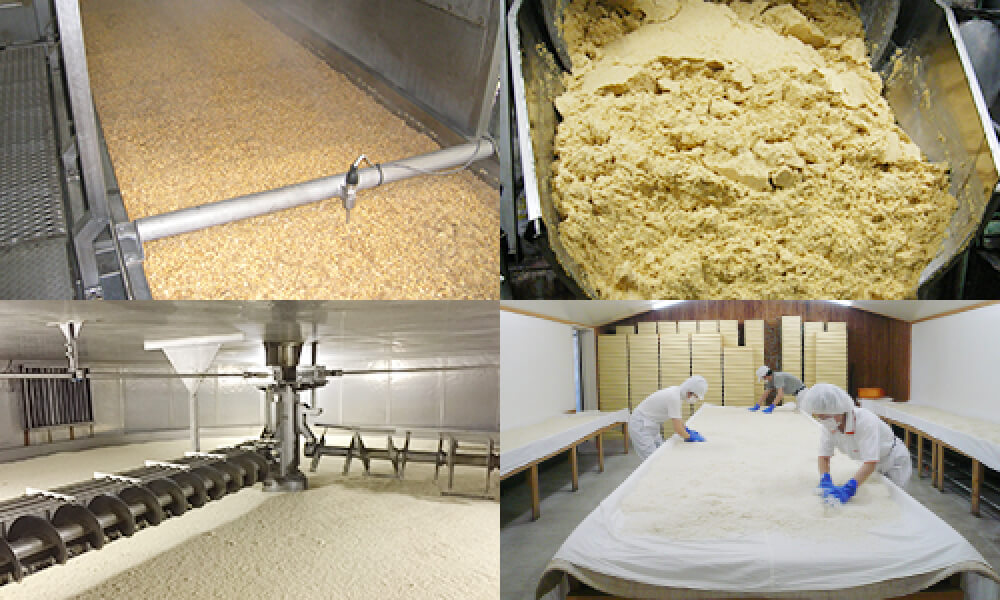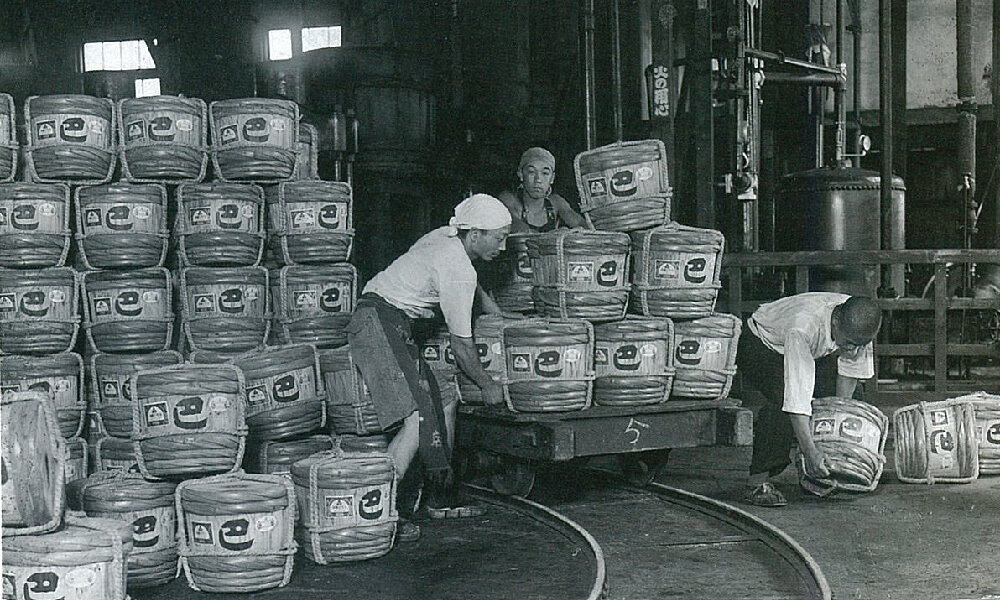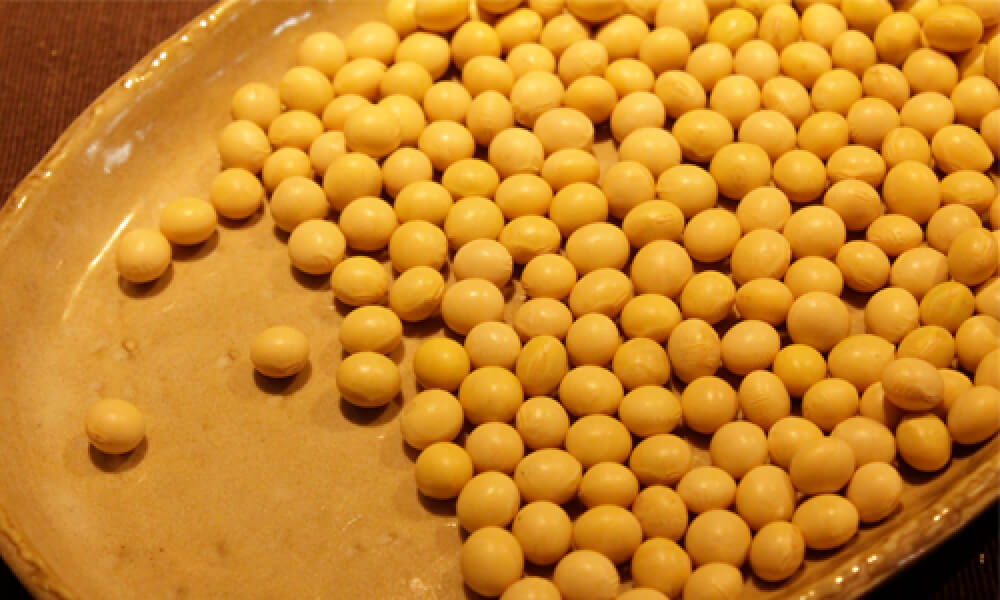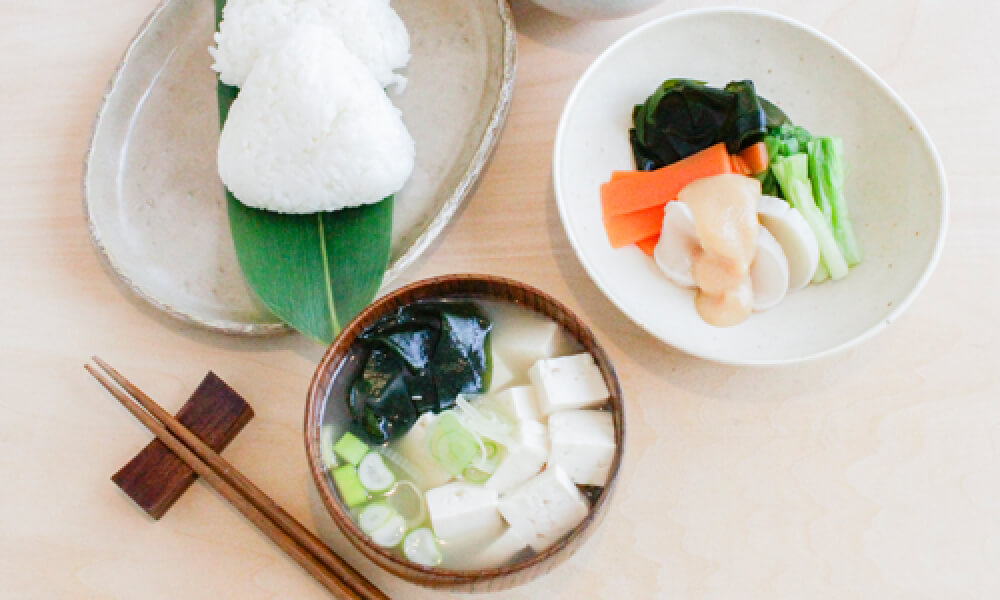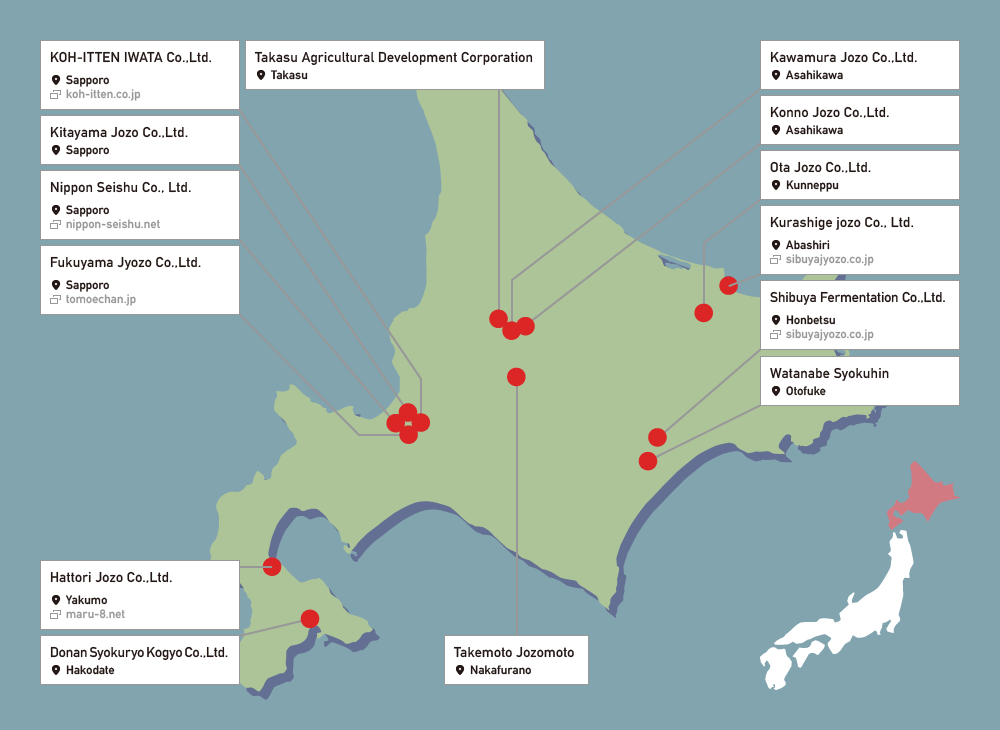About Hokkaido Miso
After the Meiji era, many settlers from various regions of Japan moved to this area,
each bringing with them the recipes from their birthplace.
As time went by, little by little these recipes changed into what became known
as the regional cuisine and the specialties of Hokkaido.
- TOPPAGE
- HOKKAIDO
Brief Overview of Hokkaido Miso
1. About Hokkaido Miso
After the Meiji era, many settlers from various regions of Japan moved to this area, each bringing with them the recipes from their birthplace. As time went by, little by little these recipes changed into what became known as the regional cuisine and the specialties of Hokkaido.
During the initial settling days, miso too was at first a government-issued commodity from the mainland, but beginning with the establishment of governmental factories in Sapporo, and with the gradual increase of breweries during the extensive development period, the quantity of miso crafted in Hokkaido was increasing as well. Due to the cold climate, initially good quality miso was hard to craft with the application of methods from the mainland.
But the newly settled brewers continuously struggled and painstakingly searched for a method best suited to the water / climate / temperature of Hokkaido. High-quality miso that was created through such a process became popular and is enjoyed by many due to its simple and fragrant features.
2. Miso as Functional Food
From ancient times, there has been a saying in Japan, “With miso, no doctors”.
Our ancestors realized the high nutritional value of miso from their experience.
Recently there have been many researches published about miso, and its nutritional benefits have become widely known through available data.
- [Health] Lowers the risk of cancer
-
- 3 bowls of miso soup per day lower the cancer rate for 40%
(Ministry of Health, Labor and Welfare Study Group 2003) - Salt content of miso does not accelerate the cause of stomach cancer
(Hiroshima University, Honorary Professor Hiromitsu Watanabe, 2006) - Daily intake of miso soup lowers the death rate of smokers
(National Cancer Center, Dr. Takeshi Hirayama [deceased], 1981)
- 3 bowls of miso soup per day lower the cancer rate for 40%
- Lowers the risk of lifestyle disease
-
- Miso lowers the occurrence of stroke, dementia, heart disease and other
(Otsuma Women's University, Professor Hiroshi Aoki, 1994) - Dietary plans with miso soup are effective against osteoporosis
(Japanese Foundation for Cancer Research, Medical Director Ruidong Chen, 1994) - Brown pigmentation of miso expected to improve diabetes
(Kagawa Nutrition University, Professor Toshiharu Gomyo, 1999) - Miso found to have properties effective for blood pressure lowering
(National Food Research Institute, Head of Office Yukio Kawamura, 1993)
- Miso lowers the occurrence of stroke, dementia, heart disease and other
- [Beauty] Prevents ageing
-
- Fermentation in miso creates age-suppressing functions
(Tokyo University of Agriculture, Professor Takeo Koizumi, 1995) - Maturation process in miso creates properties that increase antioxidative activities
(University of Tokyo, Otsuma Women's University, Honorary Professor Kato Hiromichi, 1994) - Miso has skin care, skin-whitening effects
(National Food Research Institute, Senior Researcher Hiroshi Shinmoto, 1997)
- Fermentation in miso creates age-suppressing functions
- Japan Miso Promotion Board
- http://miso.or.jp/museum/knowledge/effect/ (reference 2019-02-01)
3. Miso Worldwide!
Since the Meiji era, the export of miso had been ongoing, albeit in small quantities and limited to Japanese people living abroad. Due to the expansion of Japanese restaurants in the international market after the Second World War, and the healthy organic food boom, miso has been seeing gradual increase in foreign consumption. The export quantity of 4,243 tons in 1997 grew to 16,017 tons in 2017; it almost quadrupled in 20 years. (From the Ministry of Finance / Japan Foreign Trade Council Monthly Journal)
Due to the organic food boom in America in recent years, there has been an increase in consumption among non-Japanese citizens including Caucasians under 40 years of age. In addition, although there are locally-made brand products available in the North American organic food market, Japanese Americans and the Japanese that live in America are inclined to purchase products sourced and exported from Japan. In 2013, with the registration of Washoku (Japanese cuisine) onto the UNESCO List of Intangible Cultural Heritage, and in addition to the sharp increase of Japanese restaurants all over the world, we believe there will be further growth in demand for Japanese miso coming from the international market.
4. Future Initiatives for International Expansion of Hokkaido Miso
Hokkaido Miso aims to utilize the natural resources of this land, along with the proactive and unique traits of each of our Joint Enterprise Cooperatives, and will - with the thorough demonstration of our adaptability - push forward to develop products that meet the demands of the international market.
We will create opportunities for all foreign guests that visit Hokkaido to enjoy the taste of our Hokkaido Miso
crafted in this land. In order to offer a safe, trusted high-quality product and to provide miso on a global level, we shall all endeavor to work together as one and continue investing efforts into research.

- 01.KOH-ITTEN IWATA Co.,Ltd.
- Sapporo
- koh-itten.co.jp
- 02.Ota Jozo Co.,Ltd.
- Kunneppu
- 03.Kawamura Jozo Co.,Ltd.
- Asahikawa
- 04.Kitayama Jozo Co.,Ltd.
- Sapporo
- 05.Kurashige jozo Co., Ltd.
- Abashiri
- sibuyajyozo.co.jp
- 06.Konno Jozo Co.,Ltd.
- Asahikawa
- 07.Shibuya Fermentation Co.,Ltd.
- Honbetsu
- sibuyajyozo.co.jp
- 08.Takemoto Jozomoto
- Nakafurano
- 09.Takasu Agricultural Development Corporation
- Takasu
- 10.Donan Syokuryo Kogyo Co.,Ltd.
- Hakodate
- 11.Nippon Seishu Co., Ltd.
- Sapporo
- nippon-seishu.net
- 12.Hattori Jozo Co.,Ltd.
- Yakumo
- maru-8.net
- 13.Fukuyama Jyozo Co.,Ltd.
- Sapporo
- tomoechan.jp
- 14.Watanabe Syokuhin
- Otofuke

